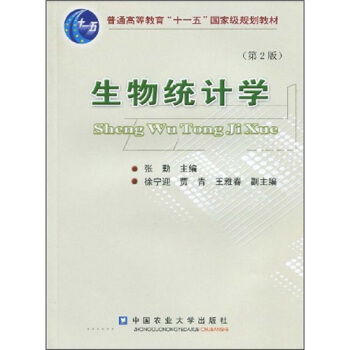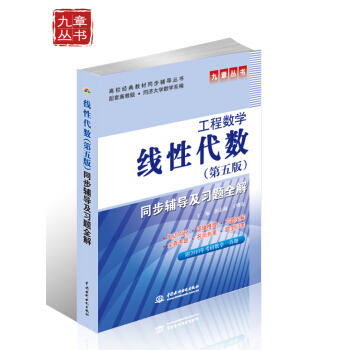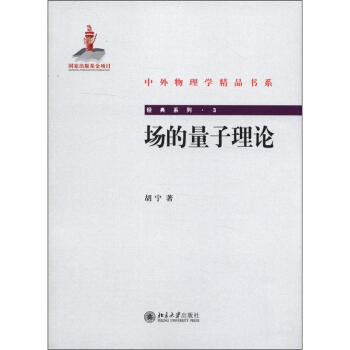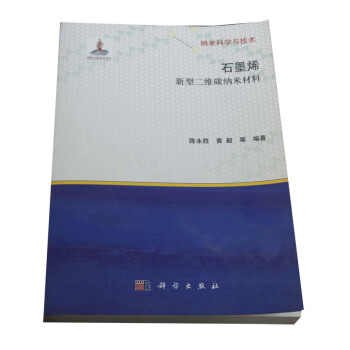![微分几何基础(英文版) [Fundamentals of Differential Geometry]](https://pic.windowsfront.com/10104514/33069226-2967-416e-9ef2-6d937e807ad0.jpg)

具体描述
内容简介
《微分几何基础(英文版)》介绍了微分拓扑、微分几何以及微分方程的基本概念。《微分几何基础(英文版)》的基本思想源于作者早期的《微分和黎曼流形》,但重点却从流形的一般理论转移到微分几何,增加了不少新的章节。这些新的知识为Banach和Hilbert空间上的无限维流形做准备,但一点都不觉得多余,而优美的证明也让读者受益不浅。在有限维的例子中,讨论了高维微分形式,继而介绍了Stokes定理和一些在微分和黎曼情形下的应用。给出了Laplacian基本公式,展示了其在浸入和浸没中的特征。书中讲述了该领域的一些主要基本理论,如:微分方程的存在定理、少数性、光滑定理和向量域流,包括子流形管状邻域的存在性的向量丛基本理论,微积分形式,包括经典2-形式的辛流形基本观点,黎曼和伪黎曼流形协变导数以及其在指数映射中的应用,Cartan-Hadamard定理和变分微积分一基本定理。目次:(一部分)一般微分方程;微积分;流形;向量丛;向量域和微分方程;向量域和微分形式运算;Frobenius定理;(第二部分)矩阵、协变导数和黎曼几何:矩阵;协变导数和测地线;曲率;二重切线丛的张量分裂;曲率和变分公式;半负曲率例子;自同构和对称;浸入和浸没;(第三部分)体积形式和积分:体积形式;微分形式的积分;Stokes定理;Stokes定理的应用;谱理论。内页插图
目录
ForewordAcknowledgments
PART Ⅰ
General Differential Theory,
CHAPTER Ⅰ
Oifferenlial Calculus
Categories
Topological Vector Spaces
Derivatives and Composition of Maps
Integration and Taylors Formula
The Inverse Mapping Theorem
CHAPTER Ⅱ
Manifolds
Atlases, Charts, Morphisms
Submanifolds, Immersions, Submersions
Partitions of Unity
Manifolds with Boundary
CHAPTER Ⅲ
Vector Bundles
Definition, Pull Backs
The Tangent Bundle
Exact Sequences of Bundles
Operations on Vector Bundles
Splitting of Vector Bundles
CHAPTER Ⅳ
Vector Fields and Differential Equations
Existence Theorem for Differential Equations .
Vector Fields, Curves, and Flows
Sprays
The Flow of a Spray and the Exponential Map
Existence of Tubular Neighborhoods
Uniqueness of Tubular Neighborhoods
CHAPTER Ⅴ
Operations on Vector Fields and Differential Forms
Vector Fields, Differential Operators, Brackets
Lie Derivative
Exterior Derivative
The Poincar Lemma
Contractions and Lie Derivative
Vector Fields and l-Forms Under Self Duality
The Canonical 2-Form
Darbouxs Theorem
CHAPTER Ⅵ
The Theorem of Frobenius
Statement of the Theorem
Differential Equations Depending on a Parameter
Proof of the Theorem
The Global Formulation
Lie Groups and Subgroups
PART Ⅱ
Metrics, Covariant Derivatives, and Riemannian Geometry
CHAPTER Ⅶ
Metrics
Definition and Functoriality
The Hilbert Group
Reduction to the Hilbert Group
Hilbertian Tubular Neighborhoods
The Morse-Palais Lemma
The Riemannian Distance
The Canonical Spray
CHAPTER Ⅷ
Covariant Derivatives and Geodesics.
Basic Properties
Sprays and Covariant Derivatives
Derivative Along a Curve and Parallelism
The Metric Derivative
More Local Results on the Exponential Map
Riemannian Geodesic Length and Completeness
CHAPTER Ⅸ
Curvature
The Riemann Tensor
Jacobi Lifts
Application of Jacobi Lifts to Texpx
Convexity Theorems
Taylor Expansions
CHAPTER Ⅹ
Jacobi Lifts and Tensorial Splitting of the Double Tangent Bundle
Convexity of Jacobi Lifts
Global Tubular Neighborhood of a Totally Geodesic Submanifold.
More Convexity and Comparison Results
Splitting of the Double Tangent Bundle
Tensorial Derivative of a Curve in TX and of the Exponential Map
The Flow and the Tensorial Derivative
CHAPTER XI
Curvature and the Variation Formula
The Index Form, Variations, and the Second Variation Formula
Growth of a Jacobi Lift
The Semi Parallelogram Law and Negative Curvature
Totally Geodesic Submanifolds
Rauch Comparison Theorem
CHAPTER XII
An Example of Seminegative Curvature
Pos,,(R) as a Riemannian Manifold
The Metric Increasing Property of the Exponential Map
Totally Geodesic and Symmetric Submanifolds
CHAPTER XIII
Automorphisms and Symmetries.,
The Tensorial Second Derivative
Alternative Definitions of Killing Fields
Metric Killing Fields
Lie Algebra Properties of Killing Fields
Symmetric Spaces
Parallelism and the Riemann Tensor
CHAPTER XlV
Immersions and Submersions .
The Covariant Derivative on a Submanifoid
The Hessian and Laplacian on a Submanifold
The Covariant Derivative on a Riemhnnian Submersion .
The Hessian and Laplacian on a Riemannian Submersion
The Riemann Tensor on Submanifolds
The Riemann Tensor on a Riemannian Submersion
PART III
Volume Forms and Integration
CHAPTER XV
Volume Forms
Volume Forms and the Divergence
Covariant Derivatives
The Jacobian Determinant of the Exponential Map
The Hodge Star on Forms
Hodge Decomposition of Differential Forms
Volume Forms in a Submersion
Volume Forms on Lie Groups and Homogeneous Spaces
Homogeneously Fibered Submersions
CHAPTER XVI
Integration of Differential Forms
Sets of Measure 0
Change of Variables Formula
Orientation
The Measure Associated with a Differential Form
Homogeneous Spaces
CHAPTER XVII
Stokes Theorem
Stokes Theorem for a Rectangular Simplex
Stokes Theorem on a Manifold
Stokes Theorem with Singularities
CHAPTER XVIII
Applications of Stokes Theorem
The Maximal de Rham Cohomology
Mosers Theorem
The Divergence Theorem
The Adjoint of d for Higher Degree Forms
Cauchys Theorem
The Residue Theorem
APPENDIX
The Spectral Theorem,
Hilbert Space
Functionals and Operators
Hermitian Operators
Bibliography
Index
精彩书摘
We shall recall briefly the notion of derivative and some of its usefulproperties. As mentioned in the foreword, Chapter VIII of Dieudonn6sbook or my books on analysis [La 83], [La 93] give a self-contained andcomplete treatment for Banach spaces. We summarize certain factsconcerning their properties as topological vector spaces, and then wesummarize differential calculus. The reader can actually skip this chapterand start immediately with Chapter II if the reader is accustomed tothinking about the derivative of a map as a linear transformation. (In thefinite dimensional case, when bases have been selected, the entries in thematrix of this transformation are the partial derivatives of the map.) Wehave repeated the proofs for the more important theorems, for the ease ofthe reader.It is convenient to use throughout the language of categories. Thenotion of category and morphism (whose definitions we recall in 1) isdesigned to abstract what is common to certain collections of objects andmaps between them. For instance, topological vector spaces and continuous linear maps, open subsets of Banach spaces and differentiablemaps, differentiable manifolds and differentiable maps, vector bundles andvector bundle maps, topological spaces and continuous maps, sets and justplain maps. In an arbitrary category, maps are called morphisms, and infact the category of differentiable manifolds is of such importance in thisbook that from Chapter II on, we use the word morphism synonymouslywith differentiable map (or p-times differentiable map, to be precise). Allother morphisms in other categories will be qualified by a prefix to in-dicate the category to which they belong.
前言/序言
The present book aims to give a fairly comprehensive account of thefundamentals of differential manifolds and differential geometry. The sizeof the book influenced where to stop, and there would be enough materialfor a second volume (this is not a threat).At the most basic level, the book gives an introduction to the basicconcepts which are used in differential topology, differential geometry, anddifferential equations. In differential topology, one studies for instancehomotopy classes of maps and the possibility of finding suitable differen-tiable maps in them (immersions, embeddings, isomorphisms, etc.). Onemay also use differentiable structures on topological manifolds to deter-mine the topological structure of the manifold (for example, h ia Smale[Sin 67]). In differential geometry, one puts an additional structure on thedifferentiable manifold (a vector field, a spray, a 2-form, a Riemannianmetric, ad lib.) and studies properties connected especially with theseobjects. Formally, one may say that one studies properties invariant underthe group of differentiable automorphisms which preserve the additionalstructure. In differential equations, one studies vector fields and their in-tegral curves, singular points, stable and unstable manifolds, etc. A certainnumber of concepts are essential for all three, and are so basic and elementarythat it is worthwhile to collect them together so that more advanced expositionscan be given without having to start from the very beginnings.
Those interested in a brief introduction could run through Chapters II,III, IV, V, VII, and most of Part III on volume forms, Stokes theorem,and integration. They may also assume all manifolds finite dimensional.
用户评价
这是一本令人印象深刻的微分几何入门书籍。我曾经尝试过阅读其他相关的书籍,但总觉得有些概念晦涩难懂,难以建立起完整的知识体系。直到我遇到了《微分几何基础》[Fundamentals of Differential Geometry],我才真正体会到什么是“精辟”和“深入”。这本书的优势在于其对概念的深刻剖析和对数学严谨性的不懈追求。作者在讲解过程中,不仅注重理论的逻辑自洽性,更着力于挖掘概念背后的几何直观和物理意义。我尤其赞赏其在介绍流形上的向量场和微分形式时,所展现出的数学之美。那些复杂的运算,在作者的笔下,仿佛都变成了优雅的舞蹈。虽然这本书的内容涵盖广泛,从曲线和曲面到高维流形,但作者始终保持着一种清晰的叙事线索,让读者在迷宫般的数学世界中,总能找到方向。我经常会在阅读过程中,被一些巧妙的证明或者精辟的论述所打动,这让我感到,数学不仅仅是冰冷的符号,更是充满智慧和美感的艺术。
评分在一次偶然的机会下,我接触到了《微分几何基础》[Fundamentals of Differential Geometry],当时我正苦于寻找一本能够系统梳理微分几何知识体系的教材。这本书的出现,就像一道光,照亮了我前进的道路。它的语言风格非常流畅,虽然是学术著作,但读起来并不生涩。作者对每一个概念的解释都力求清晰透彻,并且会详细阐述其几何意义,这对于我这种更偏向于几何直觉的学习者来说,是莫大的福音。我尤其喜欢书中的一些论证方式,它们非常有条理,逻辑链条清晰,让人能够一步步地跟随作者的思路,最终理解那些看似复杂的数学结论。例如,关于第二基本形式的讲解,作者就从一个非常朴素的曲面内蕴性质出发,逐步引入更抽象的数学工具,最终将概念清晰地呈现在读者面前。尽管我还没有完全掌握书中的所有内容,但它已经在我对微分几何的认知版图上,勾勒出了一个清晰而完整的轮廓,让我对未来的学习充满了期待。
评分我通常是一个不太容易被一本纯数学教材“征服”的人,但《微分几何基础》[Fundamentals of Differential Geometry] 却是个例外。我被它对数学概念的深度和广度所折服,它不仅仅是介绍了几何的表层,而是深入到了流形的内在结构和几何性质的本质。这本书的结构设计非常合理,从基础的拓扑空间和微分流形,一步步过渡到更复杂的黎曼几何。我喜欢作者在讲解过程中,总是不厌其烦地提供各种各样的例子,有些例子非常经典,有些则非常新颖,这极大地丰富了我对抽象概念的直观认识。我特别欣赏它对测地线、曲率张量以及各种积分定理的阐述,这些内容不仅在数学上至关重要,也为理解物理学中的时空几何打下了坚实的基础。虽然这本书对初学者来说可能并不容易,但它的严谨性和系统性,足以让任何一个真心想要掌握微分几何的读者从中受益匪浅。我常常在深夜里,一边翻阅着这本书,一边在草稿纸上写写画画,试图将那些复杂的公式和定理在脑海中转化为生动的几何图像。
评分作为一个对理论物理,特别是广义相对论和弦论有浓厚兴趣的旁观者,我一直觉得要理解这些学科的精髓,必须要有扎实的微分几何基础。于是,《微分几何基础》[Fundamentals of Differential Geometry] 成为了我尝试跨越这道门槛的起点。坦白说,这本书的阅读过程可谓是跌宕起伏。一开始,我被那些关于流形、切空间、向量场和张量的概念深深吸引,它们勾勒出一个比欧几里得空间更广阔、更灵活的几何世界。然而,随着深入,我开始意识到理解这些抽象概念的内在联系和几何意义所需要付出的努力。很多时候,我需要反复阅读同一个章节,甚至需要借助其他资料来补充我对某些概念的理解。书中的证明过程严谨且逻辑性极强,虽然有时让我感到些许吃力,但每一次成功地理解一个定理的证明,都带来了巨大的成就感。我尤其欣赏作者在引入联络和曲率时,没有直接抛出抽象的定义,而是先通过类比和几何直观来引导读者,这让我对这些核心概念的理解更加深刻。虽然这本书对我来说确实是一块难啃的硬骨头,但它所带来的对数学严谨性和逻辑思维的锻炼,以及对物理世界背后数学结构的初步窥探,都让我觉得付出是值得的。
评分拿到这本《微分几何基础》[Fundamentals of Differential Geometry] 纯属偶然,当时我刚开始接触更深入的数学领域,对各种抽象的概念感到既好奇又有些畏惧。这本书的封面设计简洁而专业,让我一眼就觉得它是一本严谨的学术著作。我记得我当时是在一个研究生的研讨会上听说了这本书,说是作为入门的经典教材。翻开第一页,就被那清晰的排版和规范的数学语言所吸引。虽然里面充斥着我还不甚理解的符号和定理,但它那种循序渐进的讲解方式,以及丰富的例子,确实给了我一种“尽管我暂时看不懂,但总有一天能掌握”的信心。我尤其喜欢它在某些关键概念的引入上,总是会先给出一些直观的几何解释,然后再进行形式化的推导。这对于我这样习惯从直观到抽象的学习者来说,是非常友好的。尽管我还没有完全啃下这本书,但它已经在我心中播下了对微分几何的浓厚兴趣的种子,让我开始期待能在这个领域深入探索。书中的一些图示也非常精妙,帮助我理解了曲面的局部性质,比如高斯曲率和平均曲率的几何意义,这比单纯的公式推导要有效得多。
评分书的微分几何的学习很有帮助。本书介绍曲线和曲面几何的入门知识,主要内容包括欧氏空间上的积分、帧场、欧氏几何、曲面积分、形状算子、曲面几何、黎曼几何、曲面上的球面结构等。修订版扩展了一些主题,更加强调拓扑性质、测地线的性质、向量场的奇异性等。更为重要的是,修订版增加了计算机建模的内容,提供了Mathematica和Maple程序。此外,还增加了相应的计算机习题,补充了奇数号码习题的答案,更便于教学。《微分几何基础(英文版·第2版修订版)》适合作为高等院校本科生相关课程的教材,也适合作为相关专业研究生和科研人员的参考书。也不失为学习英语的好方法。书的编排很好,正版
评分书是正版,当天买当天就到了,只能说京东太给力了,给个好评!
评分好书,希望能好好看看。
评分在曲面上有两条重要概念,就是曲面上的距离和角。比如,在曲面上由一点到另一点的路径是无数的,但这两点间最短的路径只有一条,叫做从一点到另一点的测地线。在微分几何里,要讨论怎样判定曲面上一条曲线是这个曲面的一条测地线,还要讨论测地线的性质等。另外,讨论曲面在每一点的曲率也是微分几何的重要内容。
评分法国数学家E·嘉当在微分几何中强调联络的概念,建立了外微分的概念。这是整体微分几何的奠基性的工作。随后,中国数学家陈省身从外微分的观点出发,推广了曲面上的高斯-博内定理。从此微分几何成为现代数学不可缺少的领域。
评分微分几何的经典教材了,大师之作,可能有写内容已经有更新的讲法了,仍不失为一本经典。
评分好好好好好好好好好好好好好好好好
评分据说很不错的。同学帮忙推荐的
评分印刷清楚,纸张质量不错,至于内容肯定是经典,GTM的书都是经典
相关图书
本站所有内容均为互联网搜索引擎提供的公开搜索信息,本站不存储任何数据与内容,任何内容与数据均与本站无关,如有需要请联系相关搜索引擎包括但不限于百度,google,bing,sogou 等
© 2025 book.coffeedeals.club All Rights Reserved. 静流书站 版权所有








![经济、生态与环境科学中的数学模型 [Mathematical Modeling in Economics, Ecology and the Environment] pdf epub mobi 电子书 下载](https://pic.windowsfront.com/10909735/7b119c17-a426-4c96-a4af-bbe046ebbca7.jpg)





![建设项目环境监理 [Environmental Supervision of Construction Projects] pdf epub mobi 电子书 下载](https://pic.windowsfront.com/11124497/rBEHZVC0DBcIAAAAAAC4FLLnbF8AADCKAKmEbIAALgs426.jpg)

![系统生态学导论 [Introduction to Systems Ecology] pdf epub mobi 电子书 下载](https://pic.windowsfront.com/11211834/567105b1N14623415.jpg)
![随机过程及应用 [Stochastic Processes with Its Applications] pdf epub mobi 电子书 下载](https://pic.windowsfront.com/11268509/5652a6b5N0ce993c0.jpg)


